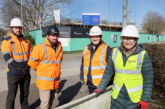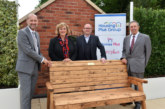 Paula Broadbent, Retirement Solutions Director at ENGIE UK discusses the new balance challenge — the human touch and invisible technology.
Paula Broadbent, Retirement Solutions Director at ENGIE UK discusses the new balance challenge — the human touch and invisible technology.
As we become older our needs become wider and more diverse. How robust our individual health is, is influenced by socio economic factors, the lives we lead, the luck of the draw in our personal gene pool, mental health, social environment as well as the place in which we live. One thing is evident though and that is globally, human beings are living longer. Although many people live healthy lives, inevitably, longevity means more and more people live with multiple chronic health conditions. And as individuals find themselves at their most vulnerable, social networks can start to diminish as people lose lifetime partners, relatives, friends and their independent mobility.
Whilst the demographic is ageing at a far greater pace than the health and social care infrastructure is prepared for, the younger working age demographic is decreasing. Creating a global workforce shortage and ‘caregiving crisis’.
Analytical thinking assumes the best solution to our ‘caregiving crisis’ lies purely in technology, but are we developing and investing in a sustainable infrastructure, which will not only stand the test of time, but also accommodate innovation and a changing environment?
Most of today’s increasingly tech-centric life relies not only upon the availability and speed of WIFI, but the internet and various APPs, devices, algorithms and sophisticated back end processes. The amount of financial investment needed to provide secure technology that will safeguard, protect and enable people is staggering but not quite as staggering as the cost to the health and social care budget if we do not invest in innovation to safeguard alternative services.
Social interaction
The main challenge with technology and robots as caregivers, is they are cold and simply incapable of replacing the human touch. Social interaction is a vital element of mental health and a lack of social interaction impacts on actual physical health as much as any other form of deprivation or illness. There is mounting evidence that shows social isolation kills more people now than obesity, therefore we should not and cannot ignore the need to combine technology with human interaction.
As a society, we need to balance out a reliance on technological advancements alongside provision of social interaction opportunities to ensure people can not only live longer, safer lives, but also live healthier, happier and more enriched ones. Life after all, is for living and not simply surviving.
LIFEstyle by ENGIE is not a housing developer, though it strives to develop excellent lifelong housing, it focuses on creating and developing services which support people to live well and age well in an inclusive community. LIFEstyle by ENGIE invests in new and smart technology to assist people to feel safe, secure and in control to remain independent for longer in their own home. The service-based organisation continues to invest in the design, build and future proof of infrastructure, homes and support services.
At the heart of each new community LIFEstyle by ENGIE develops is the ‘human touch’, by building a community environment and a purpose-built hub for activities, events and socialising, which is proven to be essential to wellbeing. Specialist staff provide community-based person-centred functions to minimise social isolation and integrate communities across all property tenure and generations.
By ensuring technology is personalised, invisible and smart we will support people to live sustainably where and how they want to live. Combine this with accessible social and intergenerational activity and longevity will be something to be experienced and enjoyed rather than endured. Our physical and mental health is dependent on community, so we need solutions that support not just the technology function but the human side









